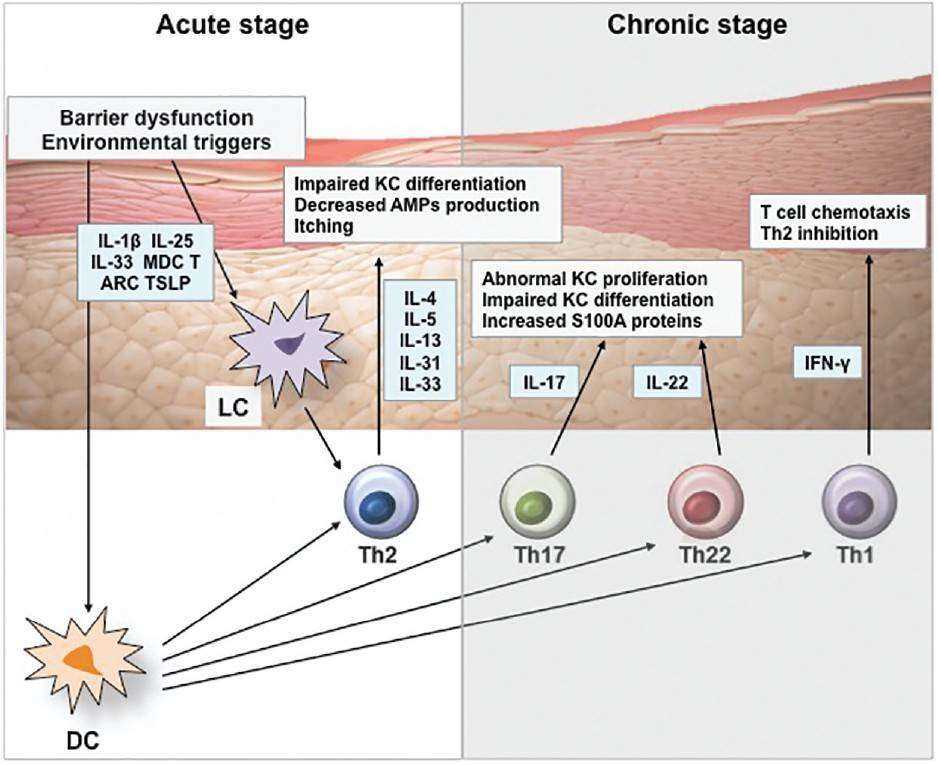- You are here: Home
- Disease Models
- Inflammation & Autoimmune Disease Models
- Atopic Dermatitis (AD) Model
Disease Models
- Oncology Models
-
Inflammation & Autoimmune Disease Models
- Rheumatoid Arthritis Models
- Glomerulonephritis Models
- Multiple Sclerosis (MS) Models
- Ocular Inflammation Models
- Sjögren's Syndrome Model
- LPS-induced Acute Lung Injury Model
- Peritonitis Models
- Passive Cutaneous Anaphylaxis Model
- Delayed-Type Hypersensitivity (DTH) Models
- Inflammatory Bowel Disease Models
- Systemic Lupus Erythematosus Animal Models
- Asthma Model
- Sepsis Model
- Psoriasis Model
- Atopic Dermatitis (AD) Model
- Scleroderma Model
- Gouty Arthritis Model
- Carrageenan-Induced Air Pouch Synovitis Model
- Carrageenan-Induced Paw Edema Model
- Experimental Autoimmune Myasthenia Gravis (EAMG) Model
-
Cardiovascular Disease Models
- Surgical Models
- Animal Models of Hypertension
- Venous Thrombosis Model
- Atherosclerosis model
- Cardiac Arrhythmia Model
- Hyperlipoidemia Model
- Doxorubicin-induced Heart Failure Model
- Isoproterenol-induced Heart Failure Model
- Arterial Thrombosis Model
- Pulmonary Arterial Hypertension (PAH) Models
- Heart Failure with Preserved Ejection Fraction (HFpEF) Model
-
Neurological Disease Models
- Alzheimer's Disease Modeling and Assays
- Seizure Models
- Parkinson's Disease Models
- Ischemic Stroke Models
- Acute Spinal Cord Injury (ASCI) Model
- Traumatic Brain Injury (TBI) Model
- Hypoxic-Ischemic Encephalopathy (HIE) Model
- Tourette Syndrome (TS) Model
- Amyotrophic Lateral Sclerosis (ALS) Model
- Huntington's Disease (HD) Model
- Intracerebral hemorrhage (ICH) Models
- Pain Models
- Metabolic Disease Models
- Liver Disease Models
- Rare Disease Models
- Respiratory Disease Models
- Digestive Disease Models
-
Urology Disease Models
- Cisplatin-induced Nephrotoxicity Model
- Unilateral Ureteral Obstruction Model
- 5/6 Nephrectomy Model
- Renal Ischemia-Reperfusion Injury (RIRI) Model
- Diabetic Nephropathy (DN) Models
- Passive Heymann Nephritis (PHN) Model
- Adenine-Induced Chronic Kidney Disease (CKD) Model
- Kidney Stone Model
- Doxorubicin-Induced Nephropathy Model
- Orthopedic Disease Models
- Ocular Disease Models
- Skin Disease Models
- Infectious Disease Models
Atopic Dermatitis (AD) Model
If you're in search of a trusted CRO partner to evaluate the therapeutic potential of your test compounds on atopic dermatitis (AD), Creative Bioarray stands out as the ideal choice. We pride ourselves on our expertise in the field of dermatological research and have established a comprehensive range of atopic dermatitis models tailored to simulate the complexities of this condition. By leveraging our advanced AD models, we can help you gain a deeper understanding of the mechanism of action of your test compounds, their efficacy in treating AD, and potential safety concerns.
AD is a chronic inflammatory skin condition that is distinctively marked by severe itchiness and recurrent eczematous lesions. The thickening of the epidermis in AD, coupled with cutaneous hypersensitivity, is linked to elevated levels of serum immunoglobulin E (IgE) and the infiltration of inflammatory cells, such as eosinophils, mast cells, and basophils. Prolonged exposure to allergens triggers the cross-linking of IgEs, leading to the eventual degranulation of mast cells and basophils. Disrupted epidermal barrier and environmental triggers stimulate keratinocytes to release IL-1β, IL-25, IL-33, MDC, TARC, and TSLP, which activate dendritic cells and Langerhans cells. Activated dendritic cells stimulate Th2 cells to produce IL-4, IL-5, IL-13, IL-31, and IL-33, which leads to barrier dysfunction, decreased AMP production, impaired keratinocyte differentiation, and itch symptoms.
 Fig. 1 Effects of cytokines on epidermis in AD.
Fig. 1 Effects of cytokines on epidermis in AD.
Our Animal Models of Atopic Dermatitis (AD)
Given the significant therapeutic challenges associated with current AD treatment regimens, there is a growing interest in exploring novel therapeutic approaches. To deeply understand the mechanisms that underlie the onset and progression of AD, it is imperative to utilize appropriate animal models. Creative Bioarray offers a comprehensive range of conventionally available animal models of AD, along with key technologies, to assist in advancing your innovative therapeutic compounds. Details are outlined below.
- Oxazolone-Induced Atopic Dermatitis (AD) Model
- 2,4-dinitrofluorobenzene (DNBF)-Induced Atopic Dermatitis (AD) Model
- Calcipotriol (MC903)-Induced Atopic Dermatitis (AD) Model
Quotation and Ordering
Creative Bioarray is the premier provider of services with disease models. We have gained experience in generating disease models in various areas and using them for drug efficacy studies. Furthermore, we are committed to developing new animal models to meet our client's needs. If you are interested in our services, please feel free to contact us at any time or submit an inquiry to us directly.
Reference
- Kim, J., et al. Pathophysiology of atopic dermatitis: Clinical implications. Allergy Asthma Proc. 2019, 1;40(2):84-92.
For research use only. Not for any other purpose.

